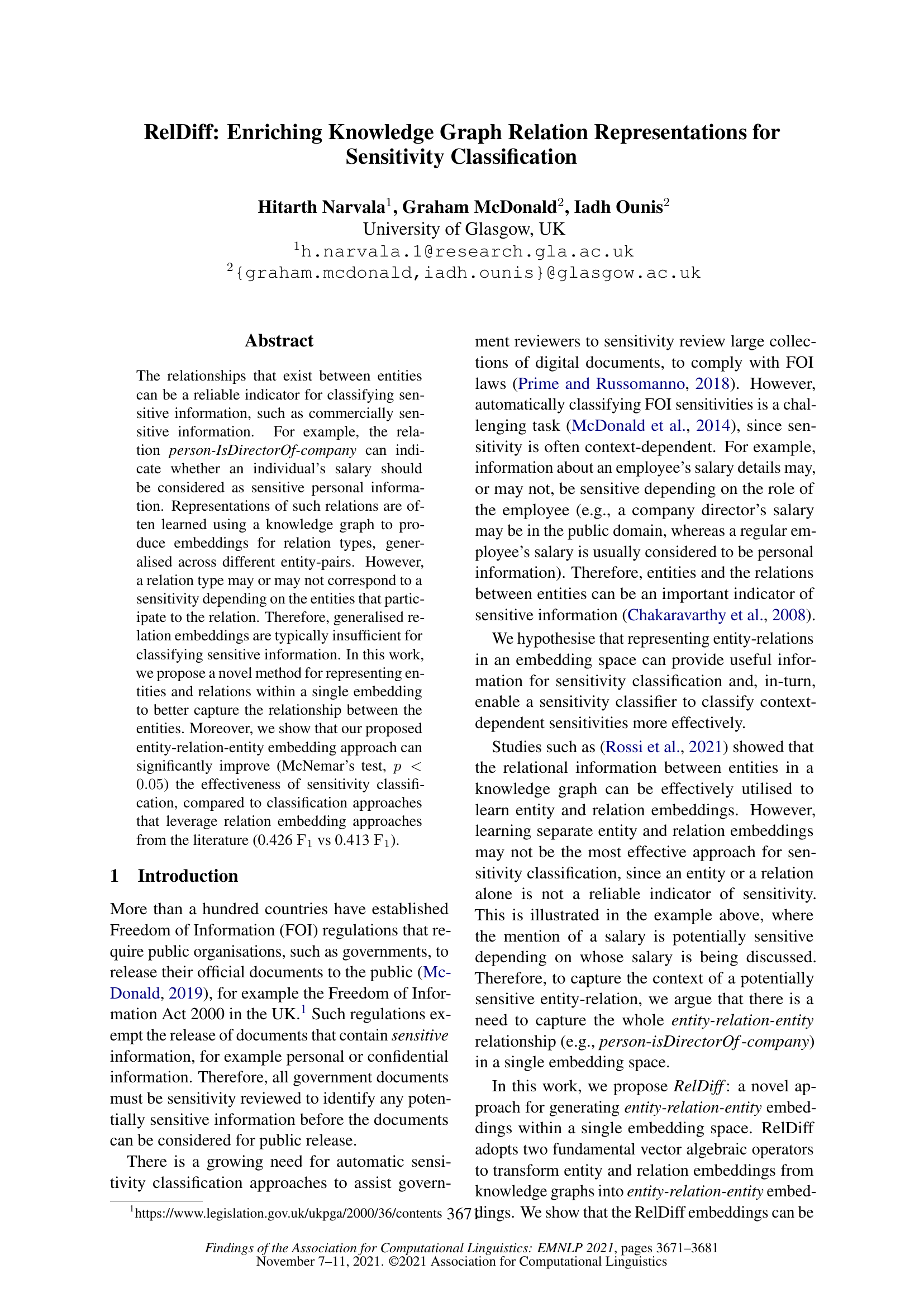Command Palette
Search for a command to run...
RelDiff: Enriching Knowledge Graph Relation Representations for Sensitivity Classification
{Iadh Ounis Graham McDonald Hitarth Narvala}

Abstract
The relationships that exist between entities can be a reliable indicator for classifying sensitive information, such as commercially sensitive information. For example, the relation person-IsDirectorOf-company can indicate whether an individual’s salary should be considered as sensitive personal information. Representations of such relations are often learned using a knowledge graph to produce embeddings for relation types, generalised across different entity-pairs. However, a relation type may or may not correspond to a sensitivity depending on the entities that participate to the relation. Therefore, generalised relation embeddings are typically insufficient for classifying sensitive information. In this work, we propose a novel method for representing entities and relations within a single embedding to better capture the relationship between the entities. Moreover, we show that our proposed entity-relation-entity embedding approach can significantly improve (McNemar’s test, p <0.05) the effectiveness of sensitivity classification, compared to classification approaches that leverage relation embedding approaches from the literature. (0.426 F1 vs 0.413 F1)
Benchmarks
| Benchmark | Methodology | Metrics |
|---|---|---|
| sensitivity-classification-on-govsensitivity | RelDiff | F1: 0.426 |
Build AI with AI
From idea to launch — accelerate your AI development with free AI co-coding, out-of-the-box environment and best price of GPUs.